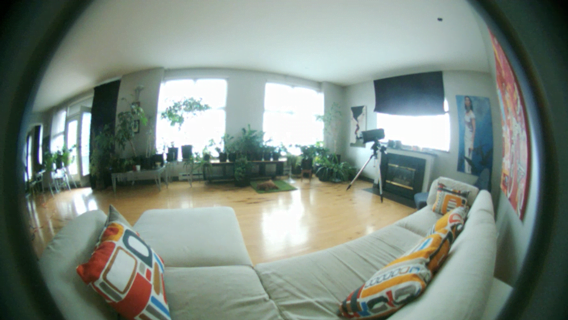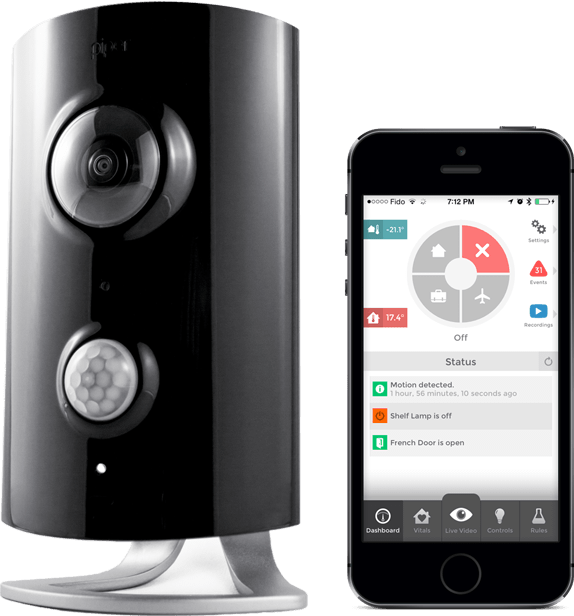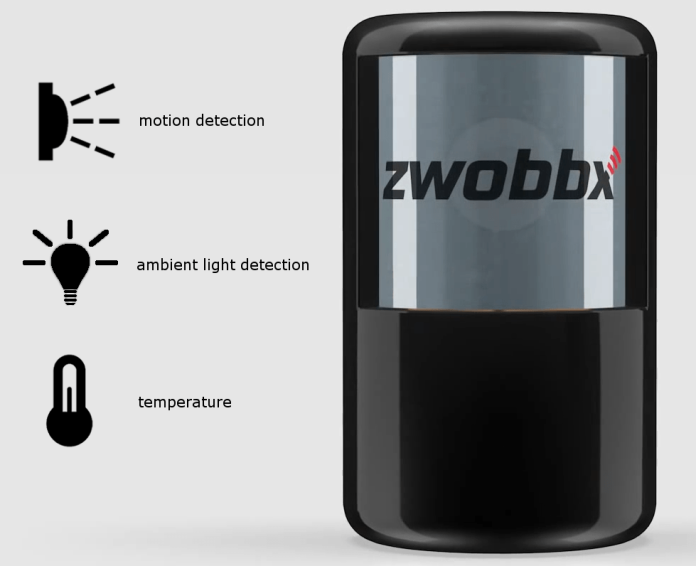As the electronic security industry turns to the latest consumer technology to change the way users interact with security systems, it should come as little surprise that a growing wave of niche-hungry start ups is looking at security electronics.
THERE are a couple of recent releases that attract attention for their simplicity, the fact they integrate so much in very small packages. I think it would be a mistake to think of these as true security systems but it’s equally foolish to assume end users will not desire a similar level of features and flex from professional domestic security solutions in the future.
Whether this tech is a real commitment to the market or a fishing attempt for the sort of monster buyout we saw with Nest is a moot point. This clever stuff is coming and it will appeal to young people – life-long renters who have grown up with technology and who represent the next wave of customers.
There’s something about solutions like this that remind me of the Ness Security Guard of times long past, which combined an entire system into a single housing. Of course, these new housings are very small and combine a great deal more functionality.
The first solution is Piper from Blacksumac which incorporates Z-wave home automation capability, a panomorphic fisheye camera, multiple sensors and an IP-based cloud model with cellular comms coming. Other core features include an ARM processor running Linux, Wi-Fi, 3-axes accelerometer, RGB LED, battery backup, and a 105dB siren. Onboard sensors include a PIR, a temperature sensor, humidity sensor and a sensor for ambient light. The PIR can be tweaked for sensitivity so as to allow for pets in the house.
The 180-degree panomorphic camera delivers 4 simultaneous views to an app on the screen of a smart device, selectable in a quad layout, or full-screen. The first view offers the entire scene and the other 3 are digital zooms into areas of the entire scene that are of interest or perceived risk.
Users set up rules for Home, Away and Vacation conditions and on this basis the system runs itself. It’s an if/then programming wizard so simplicity is the word. When the PIR detects movement, the unit records video to its onboard SD card and sends the owner and other contacts, an alert with footage. Recording is the usual process of overlay locally and footage can also stored in the cloud if you want that.
Users can also log into the system from smart devices or workstations when there’s an alert to check out what’s happening. Image quality is ok – the integrated camera is not the queen of backlight but given the entire unit costs only $230, that’s no great surprise. Foreground detail in adequate light looks fine.

Not great with backlight but the foreground is ok…
Other features include audio detection thanks to a microphone and there’s a speaker, which allows a user to remonstrate with an intruder – though more likely yell at kids home early from school. If your negotiation skills aren’t great you can elect to hit the siren to deter the children from the biscuit barrel.
The microphone is being used to apply some analytics, too. Things that it listens out for include smoke alarms and barking dogs. But in the future these could include gun shots, or the sound of breaking glass. More analytic capabilities are said to be in the works.
Thanks to Z-wave, users can expand their systems as they like, connecting lights, air conditioning, TV, ice sensors, flooding, door locks – whatever Z-wave sensors they like. And all these are accessible via the cloud-based app from a user’s smart device.
According to Blacksumac, pairing Z-Wave is really simple. You just add a sensor, press the button on the Z-Wave device and tell Piper what it is, like a front door sensor. The security rules are adjusted automatically. For a rental apartment or small home or office, Piper is a nice device.

Piper mobile app
Next is Zwobbx Smart home 2.0, which is under development by crowd funding. The Zwobbx module looks like a big PIR and is battery-powered with Wi-Fi comms and nips onto any existing network. From an installation point of view, you place a network of devices at key locations and they interact with all your systems via Wi-Fi. The unit can also connect to existing home systems through a dedicated gateway.
The development team insists it’s not meant to be an alarm system – it’s more about situational awareness. Rather than an alarm system or a new weather station or an energy metering tool, what Zwobbx says it is trying to do is combine “all useful home observation, automation and security features together and connect all of them to your phone, tablet or PC”.
They also describe the system as an all-purpose home automation tool. Coming from the IP side, the developers say they can’t understand the principle of base stations – instead everything can be handled by Wi-Fi onto networks. Whether as a security professional you agree with this rather idealistic principle or not, the idea of IP-based alarm system does have merit.
The Zwobbx unit includes a PIR, a temperature sensor, an ambient light sensor, a weather station, air humidity sensor, radar sensor for additional motion detection, smart metering of energy consumption, child watch, air quality and smoke detection.
The Zwobbx module uses an ultra-low power, Wi-Fi chip but battery life is still a rather poor 6 months – there’s an AC unit planned. An interesting feature is API for customized applications and the Zwobbx module can interact with REST-Services and provides support for Wi-Fi Direct, WPS, legacy Wi-Fi Client, SoftAP modes and HTTPS/SSL.
Zwobbx can also communicate with common SmartHome systems like KNX, EnOcean, Zigbee and many more, so there’s plenty of security and automation functionality there. In its early stages, developers are still tweaking the app but the system will communicate with smart devices and the app will be configured by the user.
While these first 2 products might be considered an exception, how long is it likely to be before electronic security manufacturers start dipping a toe in the deep end of the pool? Hikvision’s recent release of a 2-step kit containing 1080p WiFi CCTV camera, the DS-7104NI-SL/W NVR, which can be connected by the user to 4 network cameras then accessed via Hikvision's iVMS-4200 client software and iVMS-4500 mobile phone software, suggests that at the domestic and SME level, DIY models are happening already.
In the face of all this, what’s important is that security installers play to their strengths. On the alarms side, this first generation of networked ‘security’ products is technically very poor and it’s not likely that really high quality will ever be part of the DIY or telco-based smart home equation. What will be part of the equation is bundling security solution with data and comms services.
To my mind, the way to counter this shift is going to be through real commercial partnerships with local telcos, the vigorous application of our superior technology and resisting the urge to over-inflate the cost of hardware to the end user.










